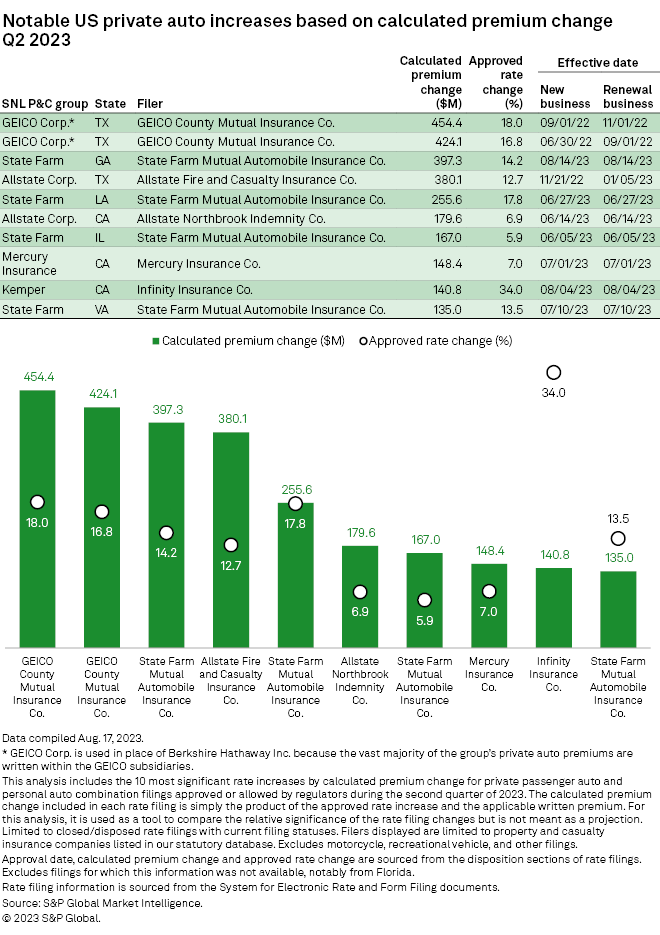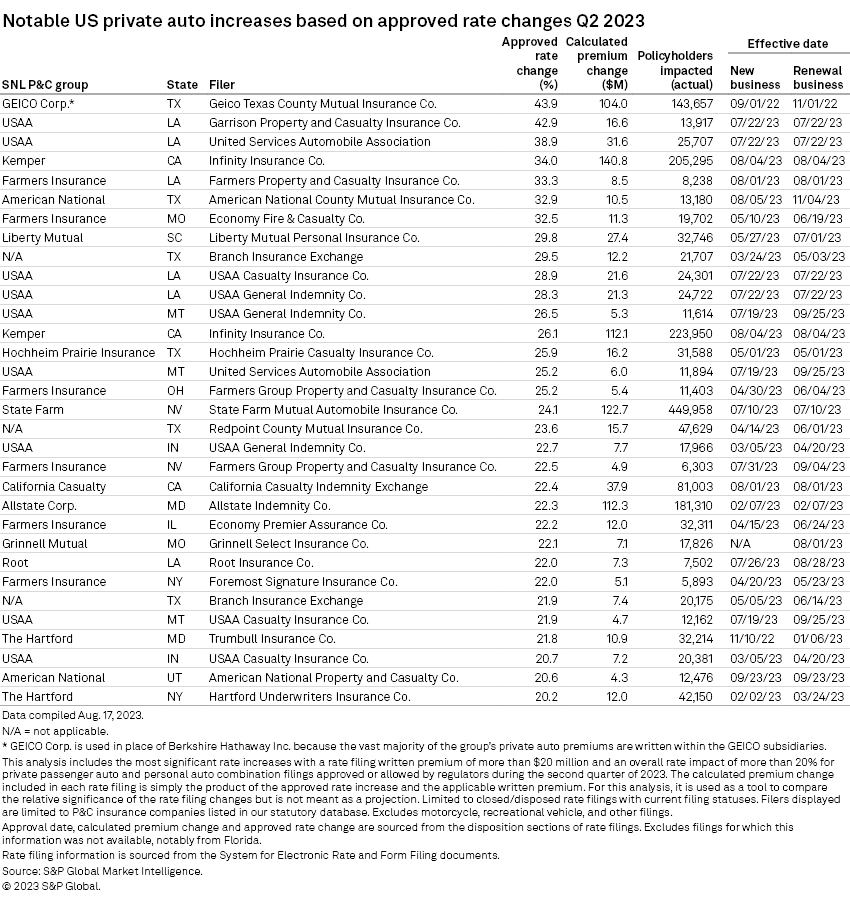S&P Global Offerings
Featured Topics
Featured Products
Events
S&P Global Offerings
Featured Topics
Featured Products
Events
S&P Global Offerings
Featured Topics
Featured Products
Events
Banking & Capital Markets
Economy & Finance
Energy Transition & Sustainability
Technology & Innovation
Podcasts & Newsletters
Banking & Capital Markets
Economy & Finance
Energy Transition & Sustainability
Technology & Innovation
Podcasts & Newsletters
S&P Global Offerings
Featured Topics
Featured Products
Events
6 Sep, 2023
By Kris Elaine Figuracion
Texas regulators approved several of the most significant private auto insurance rate increases across the US during the second quarter.
Regulators in the Lone Star State approved the largest number of rate hikes during the period, at 122, including 40 increases of over 10%, according to an S&P Global Market Intelligence analysis.
In terms of calculated premium change, Texas approved three of the most significant private auto rate increases within the quarter. The two most significant rate changes were both granted to a unit of Berkshire Hathaway Inc.'s Geico Corp.
GEICO County Mutual Insurance Co.'s 16.8% increase took effect June 30, 2022, and Sept. 1, 2022, for new business and renewals, respectively. A couple of months later, the company sought to boost its rates again with an 18.0% increase that took effect Sept. 1, 2022, for new business and Nov. 1, 2022, for renewals.
The other most notable increase in Texas was granted to a subsidiary of The Allstate Corp. The filing for the 12.7% rate hike listed a calculated premium change of $380.1 million affecting about a million policyholders.
State Farm increases rates in Q2 2023
State Farm Mutual Automobile Insurance Co. continued to increase rates in the second quarter. In total, the group obtained approvals for 44 rate hikes across 26 states during the period with a calculated premium change of $1.59 billion. State Farm had four of the most impactful rate increases in terms of calculated premium change during the quarter. The company's most significant rate increase was a 14.2% rate change for its Georgia private passenger auto program. The new rate took effect Aug. 14 for both new and renewal business.

– Read more about year-to-date US private auto insurance rates.
– Download a template to analyze rate changes for certain entities, state or type of insurance over a selected period.
USAA received approval for major rate hikes
Multiple companies received an increase in excess of 20% on business worth $20 million or more. United Services Automobile Association received such an approval in nine instances. The bulk of these filings happened in Louisiana, with four rate changes in excess of 28%. The calculated premium change listed for the approved filings in the Pelican State aggregates to about $91 million.
The largest percentage change for the quarter belonged to Geico Texas County Mutual Insurance Co. The 43.9% rate increase with a calculated premium change of $104 million is expected to impact more than 143,000 policyholders in Texas.


All figures listed are based on as-reported numbers filed in the rate filings of each subsidiary in each state. The calculated premium change is not a final projection of the additional premium the insurer may receive in the upcoming year. The calculated premium change is reported by each insurer to reflect the most impactful premium changes based on the combined impact of the percentage change and the amount of business it affects. Changes to the insurer's policy mix or policies in force are not factored into the analysis.
US states employ a variety of rate regulation mechanisms, including prior approval, modified prior approval, file and use as well as use and file. Some states do not require explicit regulatory approval prior to insurers using new rates. This analysis is based on when rate filings are "disposed" by state regulators and does not take into account when those new rates became effective for new and renewal business. In some instances, a new rate may have been in effect prior to the month the filing was approved by the regulator.

